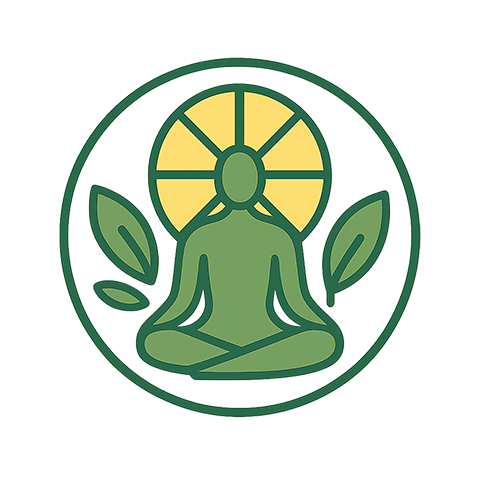In a world that buzzes constantly with notifications, emails, and social feeds, the idea of stepping back feels almost revolutionary. Yet the very act of pausing can become a cornerstone of health, allowing a person to reconnect with the natural cadence of the day. When we speak of a *regular daily rhythm*, we refer to a structured pattern of wakefulness, work, movement, rest, and reflection that mirrors our biological clocks rather than the arbitrary demands of the digital sphere. By consciously cultivating this rhythm, individuals can counterbalance the intrusive pull of technology, fostering a state of equilibrium that benefits both body and mind.
Understanding the Digital Disruption
The term “digital overload” captures the sensation many feel when the glow of screens competes with daylight, and the blue light emitted from devices can interfere with melatonin production. Modern research points to a link between excessive screen time and sleep disruption, decreased attention span, and elevated stress levels. A *regular daily rhythm* offers a framework to mitigate these effects by carving out predictable windows for digital engagement and offline activities.
- Constant alerts fragment attention.
- Late‑night scrolling reduces sleep quality.
- Frequent multitasking erodes deep work.
- Digital comparison can inflate anxiety.
The Biological Basis of Rhythm
Our bodies are tuned to a 24‑hour circadian cycle, orchestrated by the suprachiasmatic nucleus in the hypothalamus. Light cues, especially natural daylight, synchronize this internal clock. When digital exposure replaces natural light, the cycle can become desynchronized, leading to what clinicians refer to as “social jet lag.” This misalignment can manifest as chronic fatigue, mood swings, and a diminished capacity for sustained concentration.
“Adopting a regular daily rhythm that aligns with daylight exposure can reverse many of the adverse outcomes associated with prolonged screen time.” — Dr. Elena Ortiz, Sleep Medicine Specialist
Why a Regular Daily Rhythm Matters
Incorporating deliberate, technology‑free intervals into the day promotes several key benefits:
- Improved Sleep Hygiene – Consistent bedtime and wake‑up times reduce cortisol spikes and enhance melatonin release.
- Enhanced Cognitive Function – Regular breaks from screens allow the brain to process information more deeply.
- Greater Emotional Resilience – Structured downtime supports emotional regulation and reduces rumination.
- Physical Health Gains – Periods of movement and reduced sedentary behavior lower cardiovascular risk.
Designing Your Own Digital Detox Plan
A successful digital detox does not require a total blackout; rather, it is about intentional restraint. Here are evidence‑backed steps to craft a *regular daily rhythm* that incorporates healthy technology use:
- Morning Rituals – Start the day with 10 minutes of breathing or stretching before checking your phone. This primes the nervous system for calm.
- Scheduled Check‑Ins – Allocate specific time slots (e.g., 9 am, 1 pm, 5 pm) for email and social media reviews. Outside these windows, silence notifications.
- Technology‑Free Zones – Designate the bedroom and dining area as device‑free to preserve intimacy and promote sleep.
- Movement Intervals – Incorporate a 15‑minute walk or simple office stretches every two hours to counteract prolonged sitting.
- Evening Wind‑Down – Replace screens with a book or journaling at least one hour before bed to ease the transition to rest.
- Weekly Reset – Choose one day per week (often Sunday) as a “digital sabbatical,” limiting device use to essential tasks only.
Tools That Support a Balanced Rhythm
Technology itself can be an ally when configured thoughtfully. Consider these options to reinforce a *regular daily rhythm*:
- App Limiters – Use built‑in phone settings to cap usage for specific apps.
- Screen‑On‑Time Monitors – Track daily exposure to identify patterns and set realistic goals.
- Ambient Light Filters – Activate night‑mode or blue‑light filters to reduce disruption of sleep hormones.
- Scheduling Apps – Plan meetings and tasks in blocks to avoid constant interruptions.
- Mindfulness Prompts – Set gentle reminders to pause and observe one’s breath or surroundings.
Real‑World Examples
Here are brief vignettes illustrating how individuals have woven a *regular daily rhythm* into diverse lifestyles:
Case 1: Corporate Professional
By instituting a 15‑minute “no‑email” period immediately after lunch, Maria reduced her email backlog from 200 to 50 items within a month, while reporting higher focus during subsequent meetings.
Case 2: Remote Educator
Tom alternated his day between two 90‑minute teaching blocks and 30‑minute walks. The structured rhythm helped him maintain energy levels across long virtual sessions.
Case 3: Graduate Student
A weekly “digital weekend” on Saturday allowed her to complete research writing without constant browser tabs, boosting her productivity by 30%.
Measuring Success: Metrics of Balance
Tracking progress reinforces commitment to a *regular daily rhythm*. Some practical metrics include:
- Sleep Quality Scores – Use apps or journals to rate restful nights.
- Daily Screen Minutes – Aim for a 20% reduction over three months.
- Work Efficiency Index – Measure output per hour before and after implementing structured breaks.
- Well‑Being Check‑Ins – Weekly reflections on mood, stress, and satisfaction.
Addressing Common Obstacles
Adopting a *regular daily rhythm* often encounters resistance. Here are strategies to overcome them:
- Fear of Missing Out (FOMO) – Remind yourself that selective engagement can enhance enjoyment of each interaction.
- Work Demands – Negotiate clear boundaries with colleagues and clients about response times.
- Habitual Checking – Replace the urge with a physical cue (e.g., placing the phone in a drawer). The act of retrieval itself becomes a conscious decision.
- Social Pressure – Cultivate a supportive circle that values presence over connectivity.
Long‑Term Sustainability
Embedding a *regular daily rhythm* into the fabric of life requires ongoing attention. Here are key takeaways for lasting change:
- Reevaluate boundaries quarterly; adjust as life stages shift.
- Celebrate milestones, such as a month of reduced screen time.
- Keep the rhythm flexible enough to accommodate emergencies or spontaneous events.
- Encourage family or friends to join the movement; collective practice amplifies effectiveness.
Conclusion
The intersection of digital technology and human well‑being is a dynamic terrain. By consciously establishing a *regular daily rhythm*, individuals can reclaim agency over their attention, protect sleep hygiene, and nurture deeper human connections. The journey begins with small, intentional choices—like turning off notifications at sunset or setting a morning stretch routine—yet the ripple effects extend far beyond the immediate moment. In the rhythm of our days, technology can serve as a tool, not a master; the balance achieved therein reflects the harmony we all strive for in an increasingly mediated world.




